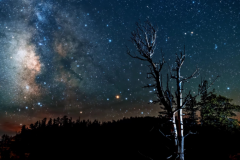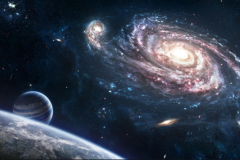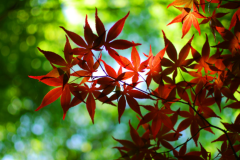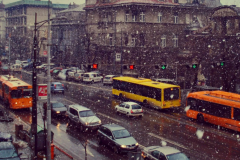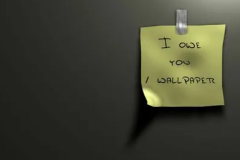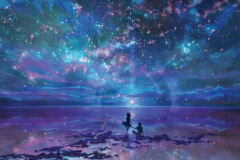旧金山英文介绍San Francisco
旧金山英文介绍San Francisco
旧金山英文导游词
用英语介绍旧金山San Francisco
San Francisco was once simply Yerba Buena (Good Herb), a Spanish fishing village with a population of 400, set on a large natural harbour. About 75 years later, when the West Coast region became US territory in 1847, it was renamed San Francisco, after the old Franciscan mission nearby. The city quickly mushroomed – the Gold Rush of 1849 inspiring a migration so rapid that seekers almost fell into the Pacific, in their desperation for a new life. The population soared to more than 300,000.
They came from the west but also from the east – thousands of people escaped famine in China for a hard life on the railroads, which were created to connect the isolated city with the rest of the country, a project completed in 1869. During this time, Chinese workers were subjected to appalling discriminatory laws. Japanese immigrants came, too, but settled separately, establishing their own businesses in the Western Addition neighbourhood and, later, what is now Japantown.
Chinatown and Japantown now constitute the biggest Asian enclave outside Asia, and the city today takes pride in its diverse population and has come to be known for its tolerance overall.
Also changing the landscape of the city was the devastating earthquake of 1906, the fires of which all but levelled its wooden Victorian homes – a handful that survived are the city’s famed and colourful ‘Painted Ladies’ in Alamo Square.
Ever resilient, San Franciscans rebuilt their city on the sea. In place of horse-drawn streetcars that traversed Russian and Nob Hills, the introduction of cable cars at the approach of the 20th century changed the way residents got around. When the Golden Gate Bridge opened in 1937, it charted yet another horizon for man and nature working as one and soon becoming the symbol of a city that has it all.
Modern San Francisco retains its relationship between materialism and money on the one hand and cutting-edge thought and progressive politics on the other. In the 1950s, the bohemian Beat movement grew up and out of San Francisco’s Little Italy neighbourhood of North Beach, which helped foster the city’s importance in the arts. The counter culture flowered in the Haight Ashbury neighbourhood (now just called the Haight) during the 1967 Summer of Love and the gay community fought for and found a home in Castro and Polk Street, where they could live openly and happily.
The city saw rapid growth in dotcom industries (located South of Market, and in nearby Silicon Valley) and has now recovered from downturns in that same area. San Francisco is the financial capital of the West Coast and once a prime shipping gateway to the Pacific, although most cargo ships now head for Oakland.
Tourism is the key industry and nets San Francisco billions of dollars each year. The Bay, which fits neatly between the Golden Gate Bridge to the west and the San Francisco-Oakland Bay Bridge to the east, is home to 14 small islands, including Alcatraz, Angel, Yerba Buena and Treasure. These can be the perfect escape from the city.
San Francisco has a mild year-round climate but it should not be confused with hot and sunny Southern California. As a testament to the moderate temperature, many homes do not have central heating systems and outdoor dining may be enjoyed almost year-round, thanks to the frequent use of outdoor patio heaters. A handy rain- and wind-resistant coat is always advised for those foggy, chilly days.
Tolerance for all ways of life is perhaps the city’s keynote, and people are constantly reinventing themselves. A city of cultural diversity ever since the Gold Rush days, San Francisco is not a melting pot, but a salad bowl. Her irresistible charm that captivates all who visit is perfectly echoed in the words of the song ‘I Left My Heart in San Francisco’.
One would be hard pressed to name another city positioned so glamorously, between the ocean and Sierra Nevada mountains to the east and west and redwood forests and the California desert to the north and south. Alistair Cooke, the British-born commentator, summed up this most beautiful and breathtaking of American cities as a ‘fortuitous mating of marine grandeur and terrestrial snugness’. It remains the best summation on record, of this city, perched precipitously at the edge of the world.
旧金山坐落于加利福尼亚州西北部,美国西海岸中点,是太平洋沿岸仅次于洛杉矶的第二大港市,是加利福尼亚州的第三大城市。面积119平方公里,人口75万,是美国的第12位。大市区包括附近4个县和奥克兰、伯克利等城镇,面积7475平方公里。城市三面环海,座落在宽不足10公里的半岛北端,介于太平洋和圣弗朗西斯科湾之间,北临**海峡。市域内丘陵起伏,有双峰山、戴维森山,最者为诺布山;沿海地带较为平坦。南流的萨克拉门托河和北流的圣华金河在城市附近汇合后旧金山华人超市英文名,向西注入圣弗朗西斯科湾。
旧金山1776年为西班牙移民拓居地。1806年俄国在此设哨所,作为当时阿拉斯加的物资供应站。1821年属墨西哥。1846年在墨西哥**中被美国人所夺取,并于1847年正式改名为旧金山,当时还只是一个居民490多人的小镇。1848年附近地区发现金矿,大批淘金者涌入,包括第一批"契约劳工"。1850年设市时,人口已增至2.5万人,成为贸易和为矿业服务的中心,附近地区的农业也有所发展。18邱年后随着横贯**铁路的通达和港区设施的逐步完善,城市迅速发展。1880年后开始向海湾以东地区扩展,形成若干卫星城镇,19世纪末,人口已达34万。1906年大地震时全城80%建筑被毁,后迅速重建。1914年巴拿马运河通航,港口日益繁荣,贸易量激增。第二次世界大战中,为军需物资的重要供应站。战后,工、商、金融、旅游服务业和市政建设均有较大发展,大市区由单一中心扩展为由旧金山、海湾东区(奥克兰)和圣何塞三大中心组成的城镇群。
旧金山居民民族构成复杂,其中非白种人约占总人口2/5以上旧金山华人超市英文名,以黑人、华人、***人、菲律宾人居多。来自世界各地的移民分区而居,形成语言文化、风俗习惯和宗教礼仪迥异的社区。如市中心黑人聚居的菲尔莫尔区,华人集中的"城",以及小大胶区(***人)、卡尼区(菲律宾人)、北滩拉丁区(意大利人)、俄罗斯山区(墨西哥人)、萨特里-菲尔莫尔区(俄罗斯人)等。
旧金山是美国最有特色的城市之一,城区中心街道呈格子状向东西、南北伸展。住宅区房屋密集程度很高。马基特大街为最繁华的商业街,从市中心伸向城东北隅山腰;**路一带高层建筑林立;蒙哥马利街及其附近地区为金融区,有"西部华尔街"之称,高52层的美洲银行大厦就耸立在这里。城东北部为主要住宅区,房屋盘山而建,街道迂回曲折,坡度较大,使用独特的交通工具缆车。伯克利为大学城,有加利福尼亚大学和各种科研机构。公共图书馆系统规模很大旧金山华人超市英文名,并多教堂、剧院。滨海山城的优美景色,丰富多采的风情,以及**公园、水上世界公园、海滩、电报山等旅游点,每年吸引数以百万计的游客。
旧金山的气候一年都是象春天一样的温暖,平均气温是20℃左右取名,在冬天也可以穿单衣到处游览。夏天潮气不大所以非常的舒服。因海风大的缘故,出门时应多带一件衣服。除了冬天这里一般不会下雨,晚上形成的浓雾早上就会全部消失。
 起名字大全,宝宝起名宝典,取名字,姓名测试打分-免费取名网记
起名字大全,宝宝起名宝典,取名字,姓名测试打分-免费取名网记